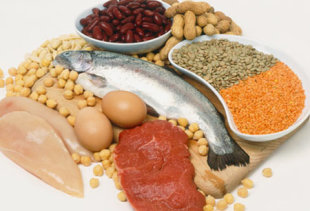
The importance of having a healthy and nutritious breakfast is largely understood by most people with a rising number of lifestyle and health-themed channels and magazines highlighting breakfast as the day’s most essential meal.
However, what constitutes the right breakfast is still a grey area, engaging different sorts of viewpoints that can often be confusing. This is an attempt to resolve the issue with simple, effective and easy-to-understand tips.
t processed foods ranging from the standard loaf of bread to crunchy cookies, sweet buns and instant noodles do little good. A breakfast is supposed to satiate your hunger for several hours so that you don’t snack in between meals. Secondly, it should provide sufficient energy so that you don’t feel de-energized at your work.
Processed foods, loaded with de-fibered cereals and lots of refined sugar, don’t meet either of these criteria. Firstly, processed carbohydrates tend to cause a spike in your glucose levels as carbs can be converted into glucose quickly. However, this sugar spike slumps rather soon since glucose is quickly routed to the body’s energy storehouse. This causes a sugar craving or hunger pang which initiates a cyclic chain of craving more sugar and food.
Thus, you should avoid:
• Excess of Jams/Sauces/Sweetened spreads/Chutneys
• Fruit juices to which glucose or sugar has been added
• Cakes
Processed foods, loaded with de-fibered cereals and lots of refined sugar, don’t meet either of these criteria. Firstly, processed carbohydrates tend to cause a spike in your glucose levels as carbs can be converted into glucose quickly. However, this sugar spike slumps rather soon since glucose is quickly routed to the body’s energy storehouse. This causes a sugar craving or hunger pang which initiates a cyclic chain of craving more sugar and food.
Thus, you should avoid:
• Excess of Jams/Sauces/Sweetened spreads/Chutneys
• Fruit juices to which glucose or sugar has been added
• Cakes
Load-Up On Proteins Even If You Are Not A Gym Junkie

The onslaught of diet fads like the Atkins Diet and wronged perceptions about gymming hard has made people either too obsessed or wary of proteins. To feel energetic throughout the day, your breakfast should contain a more than average amount of protein. Metabolism of protein takes longer, ensuring that energy is released constantly. The traditional recommendation of having a glass of milk was probably based on this logic. However, the quality of milk has depreciated considerably in the last, few years. You need to seek better, more promising sources of protein. Choose egg whites or whole eggs as they contain one of the purest forms of protein found in the animal kingdom. If you are a strict vegetarian, choose sprouted dals, cottage cheese or paneer or a quick glass of lassi made from low-fat curd. Soybean in the form of soy milk, soy flakes or boiled soya chunks tossed with some green chilli and tomatoes is a tasty, vegetarian protein choice.
Add Fiber & Nutrition In The Easy, Time-Saving Manner

The biggest reason why breakfasts are either unplanned or ignored is that the morning rush leaves little time for us. However, you can easily overcome this hurdle by choosing some smarter, time-saving sources of nutrition. For instance, dry fruits including all types of nuts, almonds and walnuts are an enriching source of macro-and micro-nutrients, including essential vitamins and trace minerals. You can add these with ease in your sandwiches, rolls or just chew them even as you exit your
house in a hurry.
house in a hurry.
Make Smarter Replacements

These tips are directed towards making healthier, more nutritious breakfast choices.
This includes:
• Using honey instead of jam and other sugar-sweetened spreads
• Choosing low-fat milk over full-cream milk
• Choosing low-fat butter over traditional butter
• Using honey as a sweetener instead of sugar
• Opting for whole-grain, oatmeal or multi-fiber breads over white bread
• Eating fresh fruits instead of processed/packaged juices
• Choosing cornflakes made from high fiber cereals like bran and muesli over conventional cornflakes.
This includes:
• Using honey instead of jam and other sugar-sweetened spreads
• Choosing low-fat milk over full-cream milk
• Choosing low-fat butter over traditional butter
• Using honey as a sweetener instead of sugar
• Opting for whole-grain, oatmeal or multi-fiber breads over white bread
• Eating fresh fruits instead of processed/packaged juices
• Choosing cornflakes made from high fiber cereals like bran and muesli over conventional cornflakes.

No comments:
Post a Comment